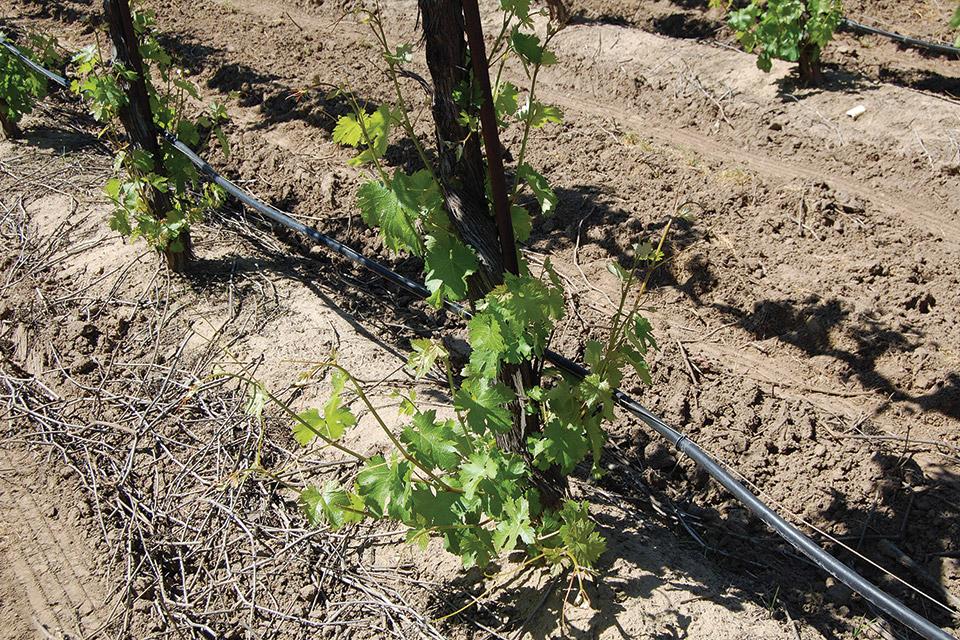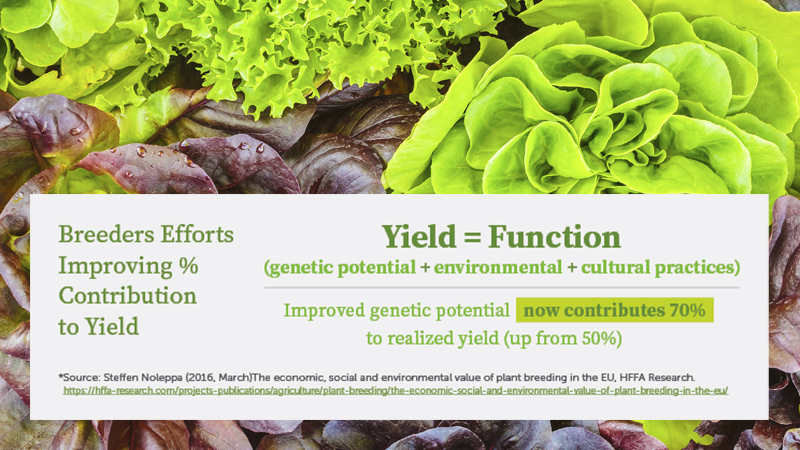Why New Grapevine Suckering Methods May Work for You

‘Viognier’ is notorious for having lots of suckers. (Photo: Joe Valente at Kautz Farms)
The art of grapevine suckering, long done by hand with grape knives and pruning shears, is changing as winegrape growers become pressed for time and labor. Mechanical and chemical suckering are two potential alternatives.
Suckering is the process of removing the small shoots, or suckers, that grapevine trunks put out in the spring. These shoots pull energy, water, and nutrients away from developing fruit. Suckering by hand requires constantly bending down, getting up, and making repetitive motions with knives or other tools.
Stephanie Bolton, Director of Grower Communications and Sustainable Winegrowing for the Lodi Winegrape Commission, said winegrape growers in the San Joaquin Valley are interested in both alternative methods.
“They’re looking for ways [to do this work] that are less labor intensive and more efficient,” Bolton says.
According to Paul Verdegaal, a University of California Cooperative Extension Farm Advisor in San Joaquin Valley, between 80% to 85% of the acreage in the San Joaquin Valley is still hand-suckered.
“I would say growers are farming 5% to 6% of the land with the mechanical method and 5% to 6% with the chemical method. The limiting factor in chemical suckering is growers’ developing interest in sustainable agriculture,” Verdegaal says.
Suckering Basics
The right time to do suckering is after bud break, between April and May. Waiting longer causes the suckers to get larger, harden, and lignify, or become woody. Then the suckers are more difficult to remove. Growers should remove suckers from the trunk, below the cordon. Cordon height varies for different trellis systems.
Joe Valente, Vineyard Manager for Kautz Farms, a Lodi-based winegrape grower, said Kautz grows 25 different varieties of winegrapes spread across almost 7,000 acres in San Joaquin, Sacramento, and Calaveras counties. The company employs between 200 and 300 workers. It is challenging to find workers for suckering work in the spring.
“We’re competing with cherry season, which can make it difficult to find available labor. Suckering is all about timing. If you start too early, the suckers will grow back. If you start too late, it’s hard to get them to come off,” Valente says.
Bolton says suckers grow throughout the spring. A grower may need to repeat the suckering process at least once to remove all the suckers.
The type of vine matters. ‘Pinot noir’ and ‘Viognier’ have many suckers, while ‘Cabernet Sauvignon’ and ‘Zinfandel’ have fewer. Younger vines usually have more suckers. Vines produce fewer suckers as they age. Vine vigor and management also affect sucker production.
Mechanical Suckering Best for Organics
Mechanical suckering can be done with tractor-powered equipment the size of a machine harvester or a handheld battery-operated tool. There are a few variations of the latter type of device. Some “look like a weedwhacker with chains at the bottom,” Bolton says. Others have flyweights that pull out a sucker below the surface. Still others have “rotating brushes,” Valente says.
A common feature of the battery-operated devices is that the worker using them wears the battery in a backpack.
“The battery pack… only lasts so long. Manufacturers are always looking to improve this aspect of the technology,” Bolton says.
The mechanical method allows organic growers to avoid risking their certification. Yet crews need to use the device carefully.
“You want to hit the trunk and tear off the suckers below the cordon, but not hit the drip hose. That’s usually at 20 inches. If you hit the hose, you can damage it,” Valente says.
Chemical Suckering Requirements
An advantage of chemical suckering is that many sprays also act as an herbicide in weed management.
“The sprays control weeds like lambsquarter and pigweed. It can save growers a lot of money to do suckering and weed control at the same time,” Valente says.
Growers need to take care with how they apply the sprays.
“Only spray the bottom half of the trunk. Talk with your Pest Control Adviser (PCA) about calculating your application rate for the treated acres while complying with the product label. Your application rate for suckering may be different than the typical rate that you would use for an herbicide application, for example. Follow label instructions closely for grape sucker control as you may be advised to include a water conditioner and/or an anti-drift agent with the spray,” Bolton says.
Chemical suckering requires the right protective gear.
“Some growers use shields on their sprayers so the spray doesn’t go up into the growing canopy of the vine,” Bolton says.
Workers applying chemical sprays should always follow the directions on the label and wear appropriate protective equipment. Required gear usually includes safety glasses, coveralls, long-sleeved shirts, shoes, socks, and rubber gloves.
Labor Shortage Dictates Change
Verdegaal said winegrape prices have been stable but are trending down.
“Anything that can be mechanized is going to be of high interest. Yet the perception of the public is that growers don’t need to use chemicals. That may not always be true. That’s why you see interest in both mechanical and chemical suckering,” Verdegaal says.
Bolton said the Lodi Winegrape Commission has held two suckering information workshops, one in June 2017 at Trinchero Family Estates in Lodi and one in May 2018 at Kautz Farms in Lodi. Between 60 to 70 people showed up at the first event. The second was a demonstration trial that growers could visit on their own.
“At the next workshop, we want to do a little rodeo between mechanical and chemical suckering. We’ll compare cost, time, effectiveness, and efficiency of the various available methods,” Bolton says.
Bolton said the goal of the workshops is to learn from each other’s experiences.
Valente said although winegrape growers throughout the state are still exploring alternative methods, there will be more urgency to find other methods within the next five years.
“In 2022, minimum wage in California will be $15 an hour,” Valente says of the current labor need of hand suckering. “What will work in this area is going
to change.”










